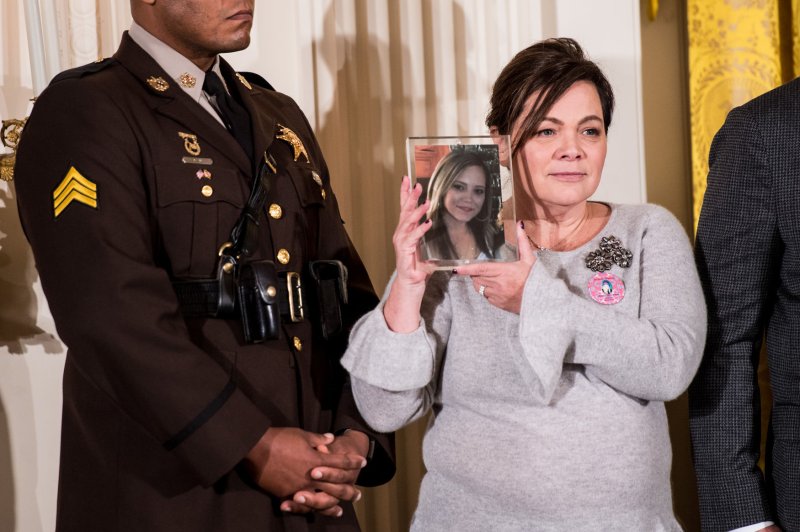A woman holds a photo of a loved one lost to the opioid epidemic as President Donald Trump labeled the opioid crisis a public health emergency in October. File Photo by Kevin Dietsch/UPI |
License Photo
Dec. 21 (UPI) -- Life expectancy for Americans fell in 2016 for the second straight year amid a surge of deadly opioid overdoses, federal officials said Thursday.
According to a National Center for Health Statistics report, life expectancy last year averaged 78.6 years -- a 0.1-year decrease from 2015.
"That's not a whole lot, but when you're talking about it in terms of a population, you're talking about a significant number of potential lives that aren't being lived," Robert Anderson, chief of the mortality statistics branch at the NCHS, said.
For U.S. males, life expectancy fell from 76.3 to 76.1 years, while females' life expectancy remained at 81.1 years.
The report noted the 11 main causes of deaths -- heart disease, cancer, unintentional injury, chronic respiratory disease, stroke, Alzheimer's disease, diabetes, influenza and pneumonia, kidney disease and suicide -- remained unchanged from 2015 to 2016.
A significant factor in the increased number of deaths was attributed to opioid abuse -- an epidemic that spurred President Donald Trump to declare a public health emergency.
"I'm not prone to dramatic statements, but I think we should be really alarmed," Anderson said. "The drug overdose problem is a public health problem and it needs to be addressed. We need to get a handle on it."
An analysis of drug abuse deaths by the NCHS showed more than 63,600 drug overdose deaths reported in the United States last year -- with more than 42,200 of those attributed to opioids.
Last year, the rate of drug overdose deaths was three times the rate in 1999, the report said. Twenty-two states had drug overdose rates higher than the national rate -- including Florida, Pennsylvania, Ohio, Louisiana, Nevada, Utah and Michigan.
"It's just really dramatically increased," Anderson said, calling the hike "far and above greater than any of the one-year increases that we've seen to this point."
The federal statistics said other causes of death, including suicide, have increased as well.
"It's also a crisis in which people are killing themselves in much larger numbers -- whites especially," Anne Case, an economist at Princeton University, said.
"Deaths from alcohol have been rising, as well. So we think of it all being signs that something is really wrong and whatever is it is that's really wrong is happening nationwide,"
In October, Trump declared a national health emergency to help tackle opioid addiction.
"We can be the generation that ends the opioid epidemic," he said.















